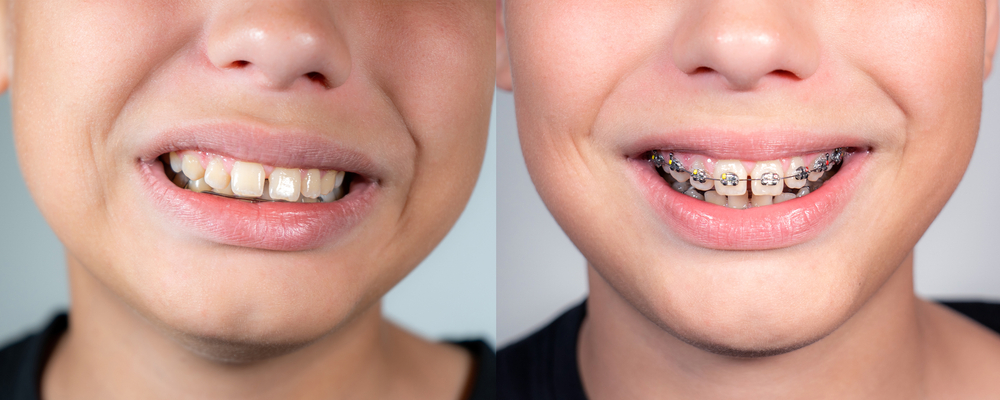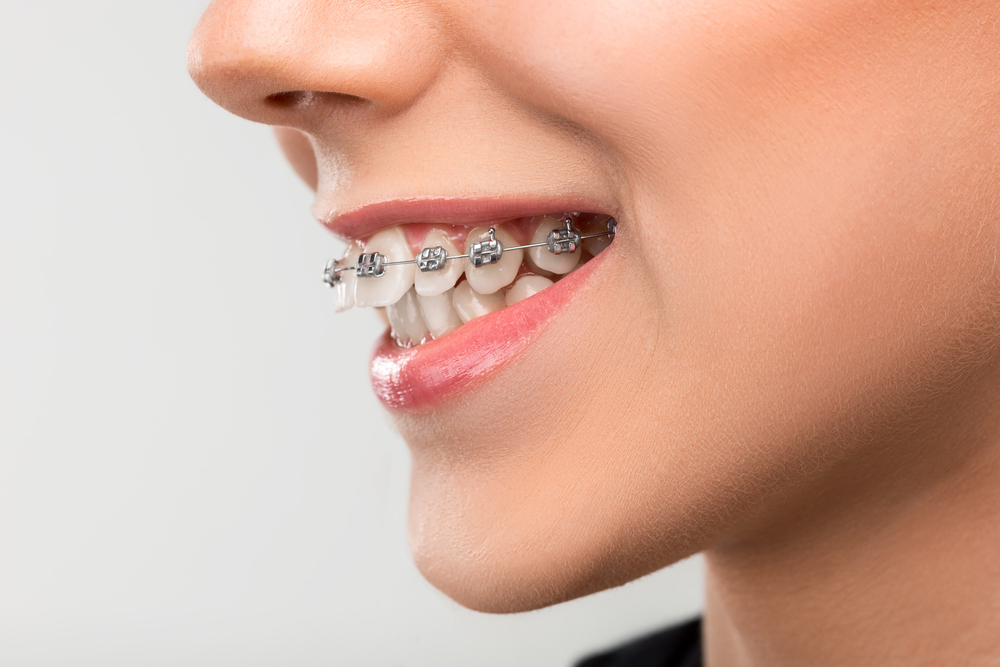One of the most common kinds of misalignments orthodontics can treat is an overbite—a term often inaccurately used interchangeably with “buck teeth.” In an overbite, the top front teeth cover the front bottom teeth, overlapping too far. Overbites can range from barely noticeable to quite severe, and if untreated may become worse over time. While the most obvious effect of an overbite is on someone’s appearance, seeking treatment for one is not just a cosmetic issue. This type of malocclusion can result in more serious dental and health issues if ignored. Fortunately, though, most overbites can be corrected with regular orthodontic care.
In a well-aligned bite, there will be a small overbite (around 1 to 2 mm), meaning the front teeth fit over the bottom teeth with a small overlap. When that overlap is too large, the resulting excessive overbite can potentially cause a range of health problems, including difficulty chewing properly, pain while chewing, jaw pain, tooth decay, gum disease, speech impediments, and breathing difficulties. In the most severe type of overbite, known as an impinging overbite, the lower teeth touch the palate behind the upper teeth when the mouth is closed, damaging the bone and potentially causing tooth loss.
What Causes an Overbite?
An overbite can be caused by a mixture of hereditary and environmental factors. For example, the shape of the jaw can affect dental alignment—if overbites run in your family, you may be more likely to have one as well. Overcrowding of the teeth may also produce an overbite. However, certain behaviors can also result in an overbite. These include:
●Thumb sucking or prolonged use of a pacifier (especially past the age of 3)
●Teeth grinding
●Excessive nail biting or similar habits
An overbite may also be accompanied by an overjet, which is a horizontal gap between the top front teeth and the bottom front teeth—the upper front teeth protrude outward at an angle. This is what most people are thinking of when they talk about “buck teeth.” Like an overbite, an overjet is also highly treatable, even if it looks alarmingly severe.
Treating an Overbite
Many times, a dentist will be the first professional to notice signs of an overbite during a regular dental exam, and then will refer the patient to an orthodontist. How an overbite is treated will depend on the age of the patient and the severity of the condition. For example, in very young patients, developing jaw problems may be corrected with Phase 1 treatment, which can make later treatment simpler and shorter. This is why we always recommend children have an orthodontic evaluation no later than age 7! Adults with serious underlying jaw issues, on the other hand, might need oral surgery in conjunction with orthodontics, as their bones have already fused. Thankfully, this is quite rare—in most cases, orthodontic care is all you’ll need.
In general, an overbite will be treated with familiar methods: braces or Invisalign. Both can be effective in addressing an overbite, so often the choice comes down to which a patient is most comfortable with. With braces, brackets are affixed to the teeth, with an archwire that guides the teeth into place with steady pressure. The advantage of braces is that they work constantly to correct tooth alignment, but some patients dislike the appearance of metal brackets. Clear brackets can be an alternative for those who want the convenience of a fixed appliance without treatment being quite so obvious.

Invisalign, on the other hand, uses a series of clear plastic trays to gradually align the teeth. The trays are unobtrusive when worn, and are removed completely when eating or when desired, making it very easy to keep treatment as private as you wish. However, success relies on consistency in wearing the trays as directed, so it’s best for patients who are motivated to stick to the regimen.
Whether you are treated with braces or Invisalign, after treatment you will need to wear a retainer to maintain your results. Immediately afterwards, you will need to wear a retainer full-time—usually, this period is 6 months. Then retainers should be worn nightly to keep teeth from shifting.
Treating Your Overbite Effectively
At B Orthodontics, we have extensive experience treating overbites in patients of all ages. We work with every patient to develop an individual treatment plan to help them achieve the healthy, well-aligned bite and beautiful smile they deserve. Whether you’re looking to prevent your child’s developing overbite from getting worse, or you’re ready to fix the overbite that’s been bothering you for years, we can help. We have convenient payment plans to keep treatment affordable, and we work with your insurance provider to maximize your dental benefits. To find out more about how B Orthodontics can treat your overbite, contact us here to schedule a consultation.











